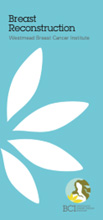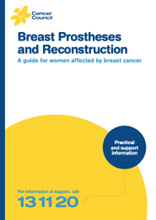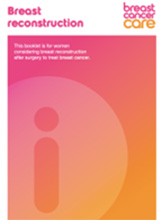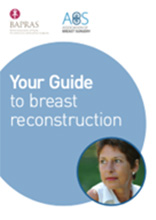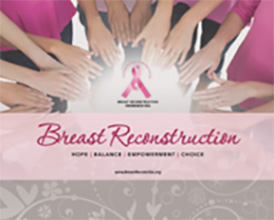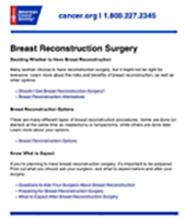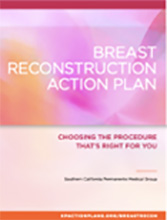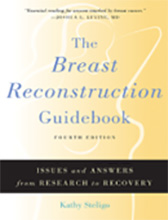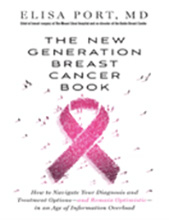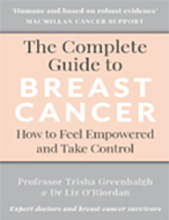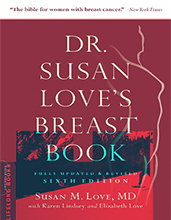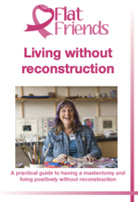Breast Reconstruction Information Resources
In the Breast Care Network of Australia’s (BCNA) Breast Reconstruction in Australia 2021 report, the timely provision of information about all aspects of breast reconstruction was identified by the 3350 women surveyed as the the number one area requiring improvement.
Ideally this information should provided in a personalised manner, tailored to the individual by their treating clinicians, however, many of the women surveyed indicated that they did not have access to adequate information about breast reconstruction at the time of their surgical treatment decision making.
The information resources below are a good starting point for any woman wishing to explore reconstructive options, keeping in mind that not all types of reconstruction are suitable for all women/clinical scenarios, and patients need to be guided by their own treatment team.
Patient Information
Books
Websites
Breast Reconstruction. Your Choice
Breast Reconstruction: Your Right. Your Choice.
Breast Reconstruction After Mastectomy
Breast Reconstruction: Susan Komen
Videos
What is Breast Reconstruction? American Society of Plastic Surgeons (ASPS)
Breast Reconstruction after Cancer
Breast Reconstruction (Australian Society of Plastic Surgeons)
Breast Reconstruction- Cancer Council
A Guide to Breast Reconstruction
JOHN HOPKINS
Latest in Breast Cancer Treatments and Breast Reconstruction
Exploring Your Options for Breast Reconstruction
DIEP Flap
LIVING BEYOND BREAST CANCER
Difficult Decisions: Breast Reconstruction
Lingering Questions About Breast Reconstruction
Breast Reconstruction Decision Aid

BRECONDA is a tool to help you make decisions about breast reconstruction surgery, and has been created to help you decide, along with your surgeon, which option you prefer after mastectomy – whether or not to have a reconstruction, and if so, what type of reconstruction will best suit you. The decision aid is not intended to replace the advice of your breast surgeon. Decisions about breast reconstruction should be made in consultation with your breast surgeon and/or plastic surgeon, who give you the best advice for your personal situation.
BRECONDA will help you:
- Think more clearly about whether or not reconstruction is right for you
- Learn about the breast reconstruction options available
- Learn about the advantages and disadvantages of each option
- Think more clearly about your preferences for the type of breast reconstruction you may choose.
To use the tool, you need to a create an account, which allows you to save your answers to the questions.
Click here.
No Reconstruction
Many women make the choice NOT to undergo breast reconstruction, either in the immediate or delayed setting. In others, there may be a medical contraindication to immediate reconstruction. In the setting of multiple medical comorbidities, when the potential risk of perioperative complications related to the reconstructive aspect of the surgery may be predicted to be unacceptably high, it may be felt oncologically inappropriate to risk delaying vital post-operative breast cancer therapies, such as chemotherapy and radiotherapy, and the patient may therefore be declined immediate reconstruction. Typical comorbidities include active smoking, obesity and diabetes. Delayed reconstruction may be offered to these patients, especially if the comorbidities are able to be reversed by smoking cessation and/or weight loss.
Websites
Going Flat: Choosing No Reconstruction
Videos
Breast reconstruction videos (including “Choosing not to have a reconstruction”)
Choosing Not to Have Breast Reconstruction
Going Flat After Mastectomy by Deanna Attai, MD
Despite recognised benefits, breast reconstruction rates for Australian women with breast cancer managed by mastectomy are less than half those in found in comparable countries like England and the United States. Through the 2018 State of the Nation report, Breast Cancer Network Australia (BCNA) highlighted the need to ‘Improve access to breast reconstruction surgery for all women who choose mastectomy’. As part of their work to meet this aim, BCNA undertook a members’ survey to develop a better understanding of women’s experiences regarding breast reconstruction The Breast Reconstruction in Australia 2021 report details the findings from the survey, which received 3,350 responses from women across every state and territory, from metropolitan, regional and rural areas, and from ages 18 to over 80, providing information about their breast reconstruction experiences.
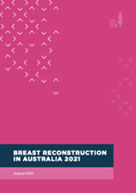
Approximately 60% of respondents provided suggestions for improvements. Responses were categorised into 10 major areas for improvement, and the number 1 area was INFORMATION.
In addition to information about the type of reconstruction procedures available, women in the study indicated that more information about the process of having a reconstruction was needed, with this information including the time taken for the procedure and the recovery, complications, and realistic information about possible outcomes of the surgery.
The report recommended that health professionals:
- Ensure all women having a mastectomy are provided with comprehensive information about their breast reconstruction options to empower women to make the most appropriate decision for them. This information should be provided prior to breast cancer surgery.
- Ensure not having a reconstruction is discussed as a viable option with women, with the pros and cons of this presented.
While recognising that many women decide to not have breast reconstruction after mastectomy, Australia’s best practice recommendations for the care of women with breast cancer recommend that breast reconstruction is discussed with all women having mastectomy to allow them to make an informed choice about this procedure. Australia’s optimal care pathway for people with breast cancer also states that women should be fully informed of their options regarding reconstruction surgery, including being informed of the possibility of immediate reconstruction (performed at the time of their mastectomy), having reconstruction at some point after completion of treatment (delayed reconstruction) or not having reconstruction at all.
Cancer Australia’s Influencing Best Practice in Breast Cancer 2016 (statement 11) declares it is:
Not appropriate to perform a mastectomy without first discussing with the patient the options of immediate or delayed breast reconstruction
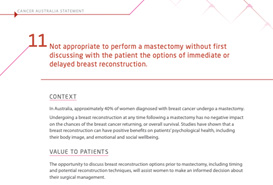
The Australian Access to Breast Reconstruction Collaborative Group (AABRCG), an initiative of BreastSurgANZ (Breast Surgeons of Australia and New Zealand) and ASPS (Australian Society of Plastic Surgeons) formed in 2020, released a position statement in 2021 to:
- raise awareness of the importance of discussing options for breast reconstruction for patients with a diagnosis of breast cancer for whom mastectomy is recommended;
- give guidance to those in a position to deliver such information;
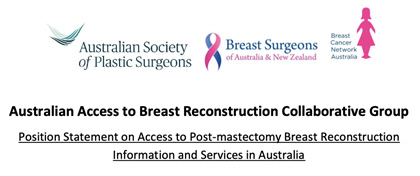
Offering breast reconstruction is promoted as the standard of care in Australia, the USA, the UK and much of Europe. If given a choice, around 50% of women will elect to undergo breast reconstruction, either at the same time as their mastectomy (immediate reconstruction) or sometime after their cancer treatment (delayed reconstruction). The true national rate of breast reconstruction in Australia is unknown. The most recent national estimate is 18%, with marked regional variation across the country.
VIDEO
About breast reconstruction in Australia
So why do so many Australian women not have breast reconstruction?
International and Australian research has identified the importance of informed decision making about breast reconstruction around the time of diagnosis of breast cancer, with absence of informed discussion being a major barrier to more women
Lack of informed decision making is also a major cause of breast reconstruction-related decisional regret. A systematic review found all included studies “identified a relationship between higher levels of decisional regret and an insufficient amount, inadequate quality or unclear nature of information provided to women prior to undergoing mastectomy.”
When discussing breast reconstruction, patients need to know:
- Breast reconstruction, whether immediate or delayed, does not impact adversely on survival from breast cancer;
- Patients who require post mastectomy radiotherapy should be reassured that they can safely undergo breast reconstruction;
- Breast reconstruction is available through both the public and the private health systems;
- Breast cancer treatment does not need to start within days of diagnosis. Patients should be reassured that taking time to decide on the most suitable treatment plan is in their best long term interests and will minimise decisional regret.
GP Information
What should GPs look for in a breast cancer service when considering referrals?
Breast cancer services in Australia have different models in different places. In some centres breast surgeons work with plastic surgeons and the full range of reconstructive options following mastectomy; in others, some breast surgeons perform implant-based reconstruction and sometimes pedicled flap surgery, but work with plastic surgeons when more complex or free autologous flaps are the most appropriate and the preferred patient option. Centres where there are a full range of reconstructive options available, through one sort of provider or another, and which provide access to multidisciplinary discussion through multidisciplinary team (MDT) meetings, allow patients the best choices for their care. Centres where there are only a limited range of options or limited links between different sorts of surgeons may not offer your patients the best choice.
BreastSurgANZ and ASPS believe that patient choice should be at the centre of the model of care of any modern breast unit and that referral mechanisms should be available so that patients can access a full range of reconstructive options. GPs are encouraged to refer patients with breast cancer to breast surgeons who work in multi-disciplinary teams and who incorporate breast reconstruction into breast cancer treatment. A guide for GPs on breast reconstruction and oncoplastic breast conserving surgery has been produced by the Australian Access to Breast Reconstruction Collaborative Group (AABRCG).
How GPs can encourage informed breast reconstructive choices in their patients
The key steps are:
- Start the conversation early
- Refer to a MDT that includes an oncoplastic breast surgeon and/ or plastic surgeon
- Continue the conversation
- Refer for support
See: General Practitioners are Key to Increasing Australia’s Low Rate of Breast Reconstruction
A key message to patients should be that there is never a single “best” type of reconstruction – different types suit different people. Another vital message is that any reconstruction will not be a replica of the lost breast and that having a reconstruction will not completely avoid the “grieving” associated with mastectomy. General practitioners can really assist the woman by helping to manage her expectations.
Overall, autologous flaps result in a higher quality end-result and avoid the maintenance issues and concerns over implant-related risks. However, implant reconstruction usually means less recovery time, less impact on the rest of the body and often a very satisfactory result. When considering timing, immediate reconstruction is often considered preferential. Immediate reconstruction probably assists in mitigating against post-mastectomy depression and also allows preservation of the native breast skin in skin-sparing mastectomy patterns. Delayed reconstruction, however, is also a valid choice and can sometimes yield better end outcomes in terms of patient satisfaction and well-being .
Radiotherapy can affect the outcome of breast reconstruction, and so if radiotherapy is needed for cancer treatment, it needs to be factored in when making decisions about breast reconstruction.
Information for Health Professionals
![]() Breast Cancer Patient and Reconstructive Consultation
Breast Cancer Patient and Reconstructive Consultation
![]() Principles for Breast Reconstruction: Indications and Limits
Principles for Breast Reconstruction: Indications and Limits
![]() Plastic and Reconstructive Breast Surgery
Plastic and Reconstructive Breast Surgery
![]() Immediate Reconstruction: General and Oncological Considerations
Immediate Reconstruction: General and Oncological Considerations
![]() Oncoplastic and Reconstructive Surgery for Breast Cancer
Oncoplastic and Reconstructive Surgery for Breast Cancer
![]() The deep inferior epigastric artery perforator (DIEAP) flap
The deep inferior epigastric artery perforator (DIEAP) flap




